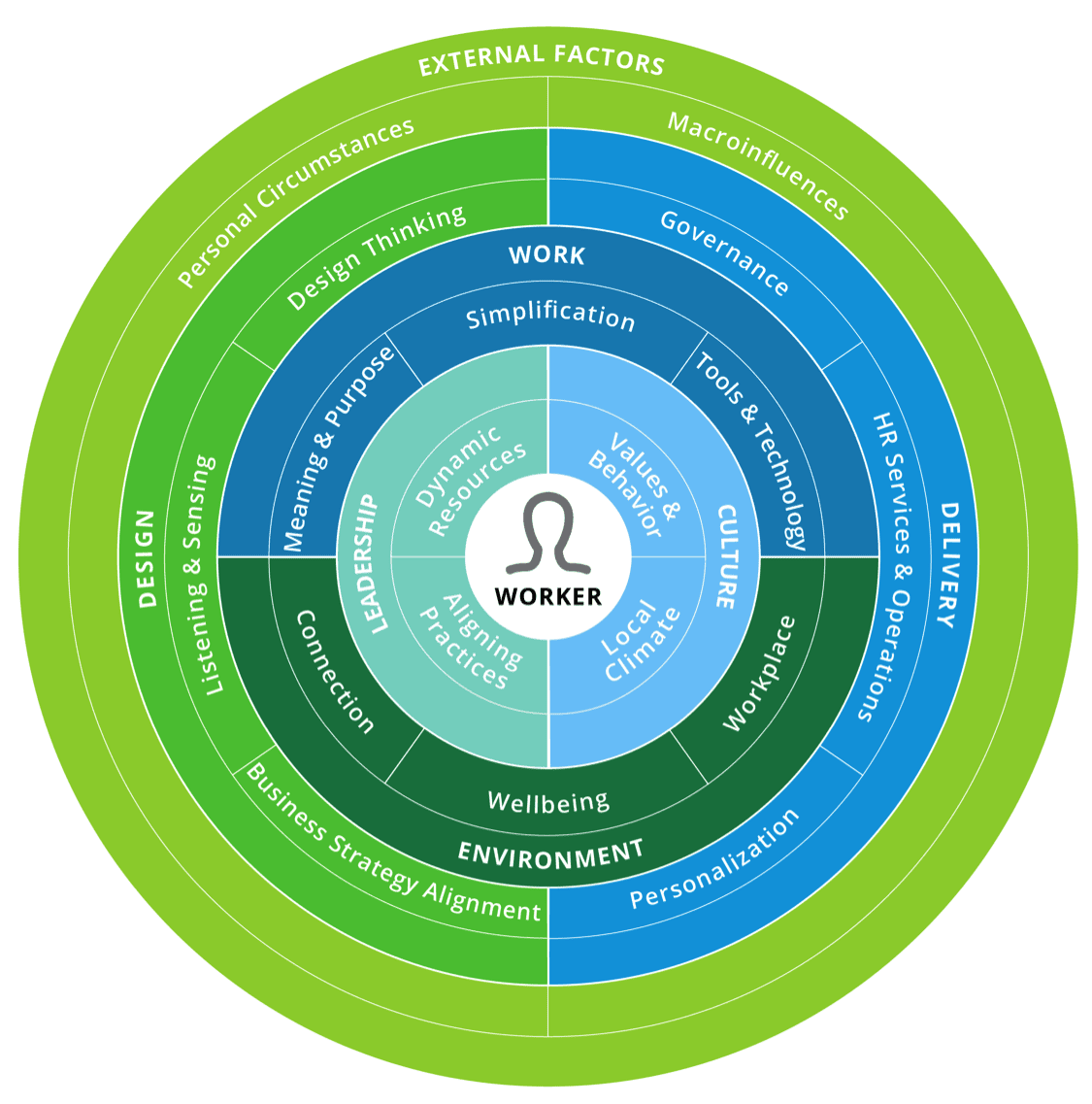Organizations need to provide a meaningful, human experience while fulfilling their purpose to succeed today.
By David Mallon
The “why” of work is shifting. People want meaning, and organizations may need to temper technology by focusing on the human element of work. Responding to a range of economic, social, and political pressures, organizations have been working to bring their inspirational corporate mission, vision, and values to life by operating as social enterprises as well as profit-making business enterprises. That means they are emphasizing corporate social responsibility, listening and responding to a wide range of stakeholders, stepping in to fill gaps where public programs and policies fall short, and generally playing an active role in society and operating with a higher purpose. But while serving this need is certainly part of what it means to be a social enterprise, it’s not enough on its own. To truly lead as a social enterprise, organizations must focus on the people within their four walls, as well as externally in society.
Think about what many workers struggle with today: High expectations to be always on, always available. This leads to financial and mental stress. Concern over their jobs and their place in the future of work is mounting as automation and AI use continue to rise. Globally, there is a lack of engagement -and downright disengagement: According to Gallup, 85 percent of employees around the world are not engaged or are actively disengaged from their jobs.
So while organizations are becoming more purpose-driven, employees are searching for more from their work: They want meaning. An organization’s purpose can serve as a guide and inspiration, but it doesn’t do enough to address those day-to-day challenges or the more individual search for meaning. Purpose is “top-down.” Meaning is “bottom-up.” Meaning is personal. To help the individuals in the organization find meaning in work, organizations have to reinvent themselves around a human focus.
What does a human focus look like? Meaning is about connections to coworkers, to individual work and its outcomes, and to personal visions for achieving best selves. Increasing the potential for meaning starts with empathy: seeing the organization through the eyes of the workforce, walking in each individual’s shoes. This empathy forces a holistic view of how the individuals in the organization experience their daily work and their respective relationship with the rest of the organization (see Figure 1).
From this “bottom-up” view, the moments that either increase or decrease employee sense of belonging, esteem, and self-actualization become manifest. These moments are where organizations can work to fill the gaps and bring meaning back to workers.
Fostering Belonging in the Age of “Superjobs”
Belonging is a real concern today as technology permeates the workplace and forces individuals to ask the question: Do I have a place? In Deloitte’s 2019 Global Human Capital Trends research, a vast majority of organizations said they expect to increase or significantly increase their use of AI, cognitive technologies, robotic process automation, and robotics over the next three years. So where do humans fit in? Innately human skills like empathy, collaboration, teaming, and problem-solving are increasingly valued as technology becomes more pervasive. They are actually integral to a whole new class of roles: “superjobs.”
Superjobs combine parts of different traditional jobs into integrated roles that leverage what people do best and what machines do best to enable greater productivity and efficiency. Superjobs go beyond asking, “how can this task be automated?” to asking, “how can this job or this work be entirely redefined or and who should do it?” The answer often includes machines and people working together, and those people might be traditional employees or they might be alternative workers.
Of course, not all jobs will be superjobs, but all workers need to feel that sense of belonging. It’s important for organizations to reimagine work in ways that meet the needs of workers in all types of jobs -including service and gig workers as well as those with superjobs. Creating a culture and infrastructure where everyone has a place is inherent in reinventing with a human focus and part of what will define organizational inclusion in the future.
Reinventing Learning
In order for jobs to be redefined for the future, organizations must have workers with the right skills, so learning is imperative. The number trend from Deloitte’s 2019 Global Human Capital Trends study is reinventing the way people learn, with 86 percent of survey respondents calling it important or very important. Leading organizations are already on top of this, empowering individuals’ need to continuously develop skills by investing in new tools to embed learning not only in the flow of work, but also in the flow of life. These organizations are helping their workforce to recognize the daily moments of potential career growth ready to be realized if leaders are intentional in maximizing the learning inherent in daily work choices, such as the projects teams joined, innovations sparked, or problems solved.
Being able to learn in this way -continuously and seamlessly as a part of every day -not only makes work more meaningful but also can build self-esteem and the confidence that, even as machines play a bigger role in the future work, humans will not be left behind.
Accessing Talent
Creating a learning environment inside the organization to build necessary skills is one way organizations can meet their ongoing talent needs. This also implies some level of talent mobility within the organization, so that as people learn new skills, they can move onto different teams or into different roles. But many organizations aren’t there yet: In this year’s Global Human Capital Trends survey, more than 50 percent of respondents said that it was easier for employees to find a job outside their organization than inside. Certainly a more human-focused approach is to facilitate movement within the organization as a natural part of one’s career, an opportunity to contribute more and grow, not only for leaders and professionals but for all employees.
Along with building and tapping internal talent, organizations also need to access other sources of talent. Some of this may involve traditional acquisition through recruiting and hiring, but with expanded use of non-traditional technology. Numerous new tools on the market, many powered by AI, make the entire process from sourcing, screening, and applying to assessing and interviewing more scientific, scalable, and effective. Accessing talent also involves reaching into the alternative workforce to immediately bring in capabilities for specific needs. And it involves expanding the organizational view on talent to tap a wide range of sources, such as people returning to the workforce or different populations, perhaps working with an external vendor or partner to access multiple talent networks.
From Employee Experience to Human Experience
The degree to which an organization provides individuals with the platform on which to become her or his best self, people’s talents and potential are able to be fulfilled. That’s a product of their total experience at work, and where meaning can be found. Similar to creating a desired customer experience, delivering a human experience requires a deliberate end-to-end focus. HR can’t own this alone, but it does have the ability and responsibility to shape and lead it, with the support of the C-suite and by partnering closely with the business, IT, facilities, finance, and even marketing to address the total experience. Those organizations that can provide this meaningful, human experience while fulfilling their purpose will be the ones that lead in the future of work.
David Mallon is chief analyst of Bersin, Deloitte Consulting LLP.















